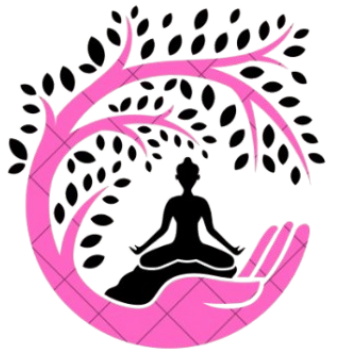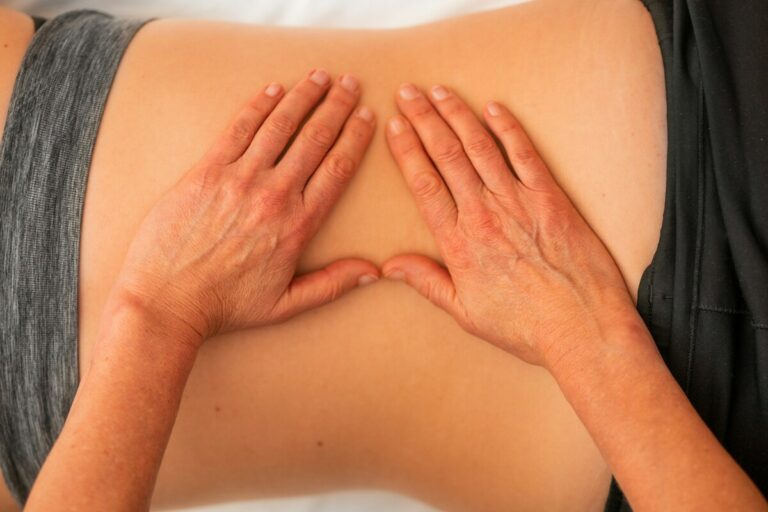Chiropractic Solutions for Knee Pain in Runners
Knee pain is a frequent issue for runners, often stemming from biomechanical misalignments and improper running techniques. Chiropractic care offers a patient-focused approach, emphasizing the restoration of alignment and muscle function. By employing evidence-based methods such as soft tissue therapy and joint manipulation, chiropractic treatments aim to alleviate knee stress and enhance mobility. Understanding how these techniques support ideal performance can be essential in determining effective solutions for knee pain management in runners.
Understanding the Causes of Knee Pain in Runners
Knee pain in runners can often be attributed to a range of biomechanical and physiological factors, which, if not properly addressed, may lead to chronic discomfort or injury. Biomechanical factors such as alignment issues, muscle imbalances, and improper running techniques play a significant role in the development of knee pain. Studies indicate that overpronation or supination during running can exacerbate stress on the knee joint, leading to pain. Additionally, inefficient running techniques, including incorrect foot strike patterns and inadequate stride length, can contribute to increased joint stress. Evidence suggests that targeted interventions focusing on correcting biomechanical inefficiencies, such as strength training and gait analysis, may mitigate these issues. A patient-focused approach is essential in tailoring interventions to individual running biomechanics and technique adjustments for ideal outcomes.
The Role of Chiropractic Care in Pain Management
Chiropractic care offers targeted techniques that address knee pain in runners through adjustments focusing on biomechanical alignment and muscle function. Evidence suggests that spinal alignment can alleviate pressure on the knee joint, enhancing overall mobility and reducing discomfort. By optimizing the body’s structural integrity, chiropractic interventions can play an essential role in thorough pain management strategies for individuals experiencing knee-related issues.
Chiropractic Techniques for Runners
For runners seeking effective pain management strategies, especially those grappling with knee pain, exploring chiropractic techniques can be highly beneficial. Chiropractic adjustments focus on realigning musculoskeletal structures to enhance joint function and reduce pain. These precisely targeted manipulations can alleviate stress on the knee joint by correcting misalignments elsewhere in the body, such as the pelvis or spine. Complementary to this, rehabilitation exercises are employed to strengthen surrounding muscles, improving stability and support for the knee. Evidence suggests that combining chiropractic adjustments with a tailored exercise regimen promotes quicker recovery and reduces recurrence rates of knee pain. Patient-focused care guarantees that treatment plans are customized, addressing specific biomechanical imbalances to optimize running performance and minimize discomfort.
Benefits of Spinal Alignment
When addressing chronic pain, particularly in the context of musculoskeletal health, spinal alignment emerges as a critical component in chiropractic care. Proper spinal health is foundational, influencing the body’s biomechanics and potentially mitigating knee discomfort in runners. Evidence suggests that ideal alignment benefits include improved posture, reduced nerve interference, and enhanced joint function. By focusing on spinal adjustments, chiropractors aim to restore balance, thereby alleviating compensatory stress on the knees. This patient-focused approach aids in redistributing mechanical loads, which can prevent further injury and promote overall wellness. Empirical studies highlight the correlation between spinal alignment and reduced pain perception, underscoring its role in thorough pain management. Consequently, spinal health serves as a pivotal element in addressing knee pain through chiropractic interventions.
Soft Tissue Therapy Techniques for Knee Pain Relief
Soft tissue therapy techniques, including myofascial release and trigger point therapy, have demonstrated efficacy in alleviating knee pain by targeting the underlying muscular and fascial restrictions. Myofascial release focuses on reducing tension and improving mobility by applying sustained pressure to the fascia, while trigger point therapy specifically addresses hyperirritable spots within muscle tissue to alleviate referred pain. These evidence-based interventions are integral to a patient-centered approach, aiming to enhance functional outcomes and overall quality of life for individuals suffering from knee discomfort.
Myofascial Release Benefits
How do myofascial release techniques serve as an effective intervention for knee pain relief? These techniques target the fascia—connective tissues enveloping muscles, bones, and joints—to alleviate myofascial pain, a common contributor to knee discomfort in runners. By applying sustained pressure and stretching, these methods enhance tissue elasticity and improve blood circulation, fostering an ideal healing environment. Research indicates that myofascial release techniques can considerably reduce pain intensity and improve joint range of motion. Clinicians emphasize patient-centric approaches, tailoring interventions based on individual anatomical and biomechanical needs. This personalized methodology guarantees that runners benefit from a reduction in knee pain and an enhancement in overall mobility, without the reliance on pharmaceuticals, thereby promoting long-term musculoskeletal health and performance.
Trigger Point Therapy
Following the principles of myofascial release, trigger point therapy emerges as another essential approach for addressing knee pain. Trigger point therapy techniques focus on identifying and deactivating hyperirritable spots within the muscle fascia, known as trigger points, which often contribute to referred pain in the knee region. By applying targeted pressure, these techniques alleviate neuromuscular tension, enhance blood flow, and promote tissue repair. Clinical evidence supports the trigger point therapy benefits, highlighting its efficacy in reducing pain intensity and improving functional mobility in runners experiencing knee discomfort. Patient-focused intervention plans often integrate trigger point therapy to address underlying muscular imbalances, offering a non-invasive, cost-effective option for long-term knee pain management. This approach aligns with thorough chiropractic care strategies in sports medicine.
Joint Manipulation and Its Benefits for Runners
Joint manipulation offers numerous benefits for runners dealing with knee pain, providing a non-invasive method to enhance joint function and alleviate discomfort. This technique involves the skilled application of force to a joint, promoting ideal alignment and flexibility, which is vital for maintaining proper runner’s biomechanics. Studies indicate that joint manipulation can improve range of motion and reduce pain by addressing mechanical dysfunction within the knee joint complex.
Furthermore, joint manipulation has been shown to positively influence neuromuscular control, which is essential for preventing injuries in runners. By restoring joint mobility, runners may experience enhanced performance and reduced knee stress during activity. This evidence-based approach underscores the importance of joint manipulation as a viable chiropractic solution, offering a patient-focused path to improved knee health for runners.
Creating a Tailored Exercise Program for Knee Health
When addressing knee health, a tailored exercise program emerges as a critical component of a thorough treatment plan. Individualized regimens incorporate exercise modifications and strength training to enhance knee stability and reduce pain in runners. Key evidence-based interventions focus on quadriceps and hamstring strengthening, as well as hip abductor exercises, which are essential for minimizing undue stress on the knee joint. Exercise modifications such as reducing impact through low-load activities can prevent exacerbation of symptoms. Emphasizing progressive resistance training fosters muscular endurance and joint resilience. A patient-focused approach guarantees the program is adaptable, continuously evaluating performance metrics and pain levels to optimize outcomes. By integrating these strategies, runners can achieve sustained knee health and improved athletic performance.
Enhancing Mobility Through Chiropractic Adjustments
Although often overlooked, chiropractic adjustments play a pivotal role in enhancing knee mobility and overall joint function. These adjustments focus on restoring proper alignment, which is essential for mobility enhancement in runners experiencing knee pain. Chiropractic interventions involve precise manual manipulations that optimize the biomechanics of surrounding structures, thereby reducing joint restrictions and enhancing mobility. Studies have demonstrated significant chiropractic benefits, such as improved range of motion and decreased pain levels, contributing to enhanced functional performance in athletes. By targeting joint dysfunctions and muscular imbalances, chiropractic care facilitates improved neuromuscular coordination. This evidence-based approach not only aids in alleviating discomfort but also supports long-term knee joint health, promoting sustained athletic performance and reducing the risk of re-injury.
The Importance of Posture and Alignment in Running
Proper posture and alignment are critical components in enhancing running performance and minimizing knee pain. Misalignments can result in biomechanical inefficiencies, leading to increased stress on knee joints. Advanced alignment techniques, such as chiropractic interventions, focus on restoring natural curvature and balance, thereby promoting ideal kinetic chain function. Evidence supports that posture correction through targeted chiropractic care can enhance proprioception and muscular coordination. This alignment enhancement helps in distributing forces evenly across the lower extremities, mitigating the risk of repetitive stress injuries. Runners benefit from individualized assessments that identify postural deviations and prescribe corrective strategies. By addressing these misalignments, patients not only experience reduced knee pain but also achieve improved running efficiency and endurance. This holistic approach underscores the importance of structural integrity in athletic performance.
Preventative Measures and Maintenance Strategies
An array of preventative measures and maintenance strategies are essential for mitigating the risk of knee pain and ensuring long-term joint health. Evidence-based protocols recommend tailored strength training regimens to enhance muscular support around the knee joint, consequently contributing to injury prevention. Flexibility exercises, including dynamic stretching, are advocated to maintain ideal range of motion, thereby reducing the likelihood of biomechanical imbalances. Patient-focused education on proper footwear selection and running surface variability can further decrease stress on knee structures. Additionally, regular chiropractic adjustments can enhance joint alignment and function, serving as an adjunct to conventional recovery techniques. Integrating these strategies fosters resilience in runners, promoting not just immediate relief but sustained knee health over time.
Success Stories: Runners Who Have Benefited From Chiropractic Care
Many runners have reported significant improvements in knee pain and overall performance following chiropractic care. Runner accounts highlight the efficacy of chiropractic interventions in alleviating patellofemoral pain syndrome and iliotibial band syndrome, common afflictions in the running community. These accounts often describe chiropractic journeys involving spinal adjustments, soft tissue therapies, and proprioceptive exercises tailored to each athlete’s biomechanical needs. Clinical evidence supports these narratives, demonstrating reduced inflammation and improved joint mobility post-treatment. The personalized approach of chiropractic care allows runners to address underlying musculoskeletal imbalances, leading to enhanced kinetic chain efficiency. The documented success stories serve as a demonstration of the potential of chiropractic solutions in restoring function and preventing recurrence, ultimately contributing to sustained athletic performance and runner satisfaction.
Frequently Asked Questions
How Does Chiropractic Care Compare to Traditional Physical Therapy for Knee Pain?
Chiropractic techniques and traditional physical therapy both offer evidence-based pain relief for knee pain. Chiropractic care focuses on spinal adjustments and joint alignment, while physical therapy emphasizes exercises and movement retraining, providing extensive, patient-focused strategies for managing discomfort.
Are There Any Risks Associated With Chiropractic Care for Runners?
The current question examines risks in chiropractic care, focusing on chiropractic safety and treatment effectiveness. Evidence-based research highlights minimal risks when performed by qualified professionals, emphasizing patient-focused evaluations to guarantee safety and enhance treatment outcomes for runners.
Can Chiropractic Adjustments Improve Running Performance in Addition to Alleviating Pain?
Chiropractic adjustments may contribute to performance enhancement and injury prevention in athletes. Evidence suggests improved biomechanics and alignment can lead to increased efficiency and reduced strain, ultimately supporting both pain relief and optimized running performance for patients.
How Often Should Runners Visit a Chiropractor for Knee Pain Management?
For managing knee pain, chiropractic frequency varies based on individual assessments, pain severity, and response to treatment. Evidence suggests that bi-weekly visits may optimize outcomes, ensuring patient-focused care and effective pain management tailored to runners’ needs.
What Should Runners Expect During Their First Chiropractic Appointment?
During an initial assessment, runners can anticipate a thorough evaluation of biomechanics, medical history, and pain source. Treatment expectations include personalized care plans, evidence-based techniques, and discussions on potential outcomes and progress monitoring.





